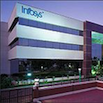Hoboken Tech Meetup is a nice counterpoint to the goings on across the Hudson. Though I enjoy the big-city excitement of the NYC version, the Hoboken Meetup I went to last night at Stevens Institute’s Babbio Center also had its share of fun, Jersey style.
I loved when Michael Streko of Knowem (Belmar), social media trademark protection firm, said he sucked at Powerpoints before he launched into his speedy presentation, which had maybe two slides. I get it: we’re not fluff-meisters, we got products that sell and make money.
On this point, Streko stated that his site was profitable within an hour two hours after launch.
Take that NYC startups!Continue reading


 On Friday, the FCC sent out a letter to Fox and Cablevision requesting both to state how they are meeting their statutory obligations ( “to negotiate in good faith”) over their current retransmission dispute. As Yankee fans are painfully aware, Cablevision and Fox had an agreement that expired on October 15 to carry WNYW, WWOR, and WTXF channels. Cablevision pulled its rebroadcasting of local MY 9 and Fox 5 television, which carries the Yankee games in the New York area, in a disagreement over its payments to Fox.
On Friday, the FCC sent out a letter to Fox and Cablevision requesting both to state how they are meeting their statutory obligations ( “to negotiate in good faith”) over their current retransmission dispute. As Yankee fans are painfully aware, Cablevision and Fox had an agreement that expired on October 15 to carry WNYW, WWOR, and WTXF channels. Cablevision pulled its rebroadcasting of local MY 9 and Fox 5 television, which carries the Yankee games in the New York area, in a disagreement over its payments to Fox.
 Holy Heisenberg! Scientific American, the magazine better known for writing about dark holes and gene splicing, has editorialized earlier this month on the state of US broadband. While SA has in recent years taken on more topical subject matter, there opinionating on broadband was a bit of a surprise to this long-time reader.
Holy Heisenberg! Scientific American, the magazine better known for writing about dark holes and gene splicing, has editorialized earlier this month on the state of US broadband. While SA has in recent years taken on more topical subject matter, there opinionating on broadband was a bit of a surprise to this long-time reader.
 I practically did a spit take while drinking my coffee this morning and reading The New York Times story about a municipal broadband project in Tennessee. I learned that Chattanooga’s community owned power provider, EPB, has plans to offer up to 1 Gigabit per second to its fiber-to-the-home subscribers by the end of the year. True, that can cost you almost $350 per year (lower if you bundle in voice and video).
I practically did a spit take while drinking my coffee this morning and reading The New York Times story about a municipal broadband project in Tennessee. I learned that Chattanooga’s community owned power provider, EPB, has plans to offer up to 1 Gigabit per second to its fiber-to-the-home subscribers by the end of the year. True, that can cost you almost $350 per year (lower if you bundle in voice and video).